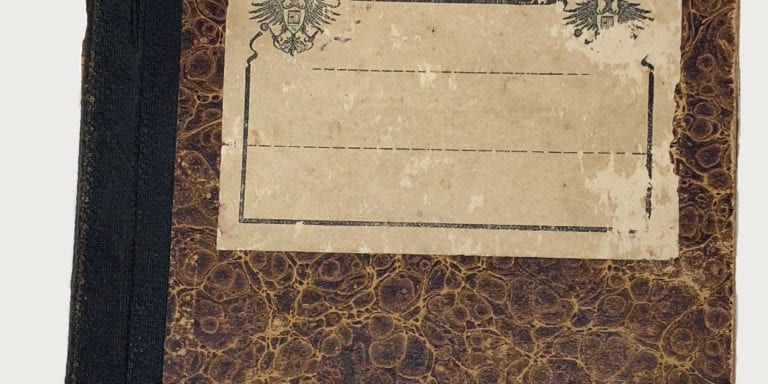
Although music uses sound as its medium of conveyance, music is not just sound.
From Cambridge English Corpus
This plain little notebook appeared on a cart of odds and ends this week.
If you’ve read any of these book stories before you are aware of the carts that have my name on them. The secondary book sorters here are given anything that doesn’t have a barcode or ISBN on it. Primary sorters—those who go through the thousands of boxes we buy from the public each week—are not trained to discern the trash from treasure, the common from the rare. It takes time and training and a special aptitude to think “outside the book” on potentially exotic material. We’ve worked hard to cast a very wide net in order to catch books that may be “special.” The secondary sorters can make decisions on 99% of the material forwarded to them. Much of it is worthless—modern magazines, old textbooks, book club novels…. When they come across something they don’t want to make a decision on (or think I may enjoy seeing), they kick it to me. A lot of what gets forwarded to me is very difficult material. The frustration of having so many things that are very hard to quantify gets to me sometimes—well, often. If it’s not something that could reasonably be offered online for sale, what are the options? Some can be sent to one of the retail stores, but many things would simply get lost there. Lost equals oblivion. Part of my job, my mission, is to rescue obscure but wonderful objects from a descent into oblivion.
We are working on ways to market things like manuscripts and photo albums, journals and scrapbooks, stamp albums, handwritten cooking recipe books, sketchbooks and ephemera. There is actually a “secret room” here where I’ve stashed hundreds of those in hopes for future placement…somewhere. They are waiting there in the darkness for me to find a solution.
I picked the anonymous old thing up. It was a late 19th or early 20th century composition book. I wondered what the eagles stand for on the front cover. The “N” made me think Napoleon, but it seemed much later than that. Looking closer, the eagle may be holding printer tools in its talons. The tool in the right talon may be a bookbinder’s fillet. If so, maybe the birds are the book manufacturer’s trademark.
I inspected the exterior quickly.
“What will this be? Something cool? Or blank? Or just a long ago child’s writing practice?”
I flipped the notebook open and was very pleased to see page after page of manuscript medical prescription formulas in a neat flowing hand. What kind of pen was used? A dip or nib pen? Or an early fountain pen with a lever to lift in order to suck ink from a bottle?
I have had more than a few of these over the years. A doctor or nurse or pharmacist or chemist records concoctions learned from others or found in books. Far more often, we get notebooks with manuscript cooking recipes. I figured I could sell it to a bookselling colleague who specializes in such material for $50 or $100. I started to take some pictures of it with the idea of forwarding them to a couple people to see if there was interest.
I really can’t do this with most of the “difficult” material I come across. It would just be too time consuming. We get too many. Unless an object has an interesting “hook” to really capture someone’s interest it is just another neat old thing…
At the same time I was training a person at a computer station nearby. She was learning how to research and evaluate potentially collectible books online.
Things go fast and furious here. They have to. If we don’t process books quickly, then all the others waiting for attention…continue to wait and wait and wait…
But something told me to look more closely at the name written on the front free endpaper.
Or was it “someone”?
“Yep.”
My Book Muse.
“You’re taking credit?”
“I perceived you needed a bit of a nudge.”
“Good call.”
“You might have found it on yer own but I was in a bit of a hurry.”
“On your way to a Muse Concert or convention or something?”
“Very merry and whimsical! That is a ‘joke’? Am I correct?”
“Ummm…yeah.”
“Ta!”
I asked my student, “See if you can find anything on Vashti Bartlett online.”
I checked the picture of the mature woman laid next to the inscription. There was no identification on it.
In moments, my student spoke, “Here’s something.”
I looked over her shoulder. There was a Wikipedia page about her!
“Bingo!” My estimation of this little notebook leapt enormously.
https://en.wikipedia.org/wiki/Vashti_Bartlett
Things came together quickly then. She was a Baltimore girl born and bred. She graduated from Johns Hopkins Nursing School in 1906.
After writing her name with a flourish on the front free endpaper she wrote, “Johns Hopkins Hospital 12-22-4”
Three days before Christmas in 1904.
I thought, “Where have you been for 114 years, little journal?”
Images of the book languishing in boxes and attics appeared in my mind. I went and retrieved my laptop to look further. I googled Vashti Bartlett. Near the bottom of my screen, below the Wikipedia entry and a couple other entries were: “Images for Vashti Bartlett”
I clicked on a thumbnail and her portrait expanded to fill a third of the screen. There she was looking back at me from over a century ago. Vashti.
I checked quickly online: “Define Vashti”
Vashti could be:
Old Persian for “beautiful one.”
Or the Queen of Ahasuerus.
Or Hindi for “beautiful.”
Or Hebrew:
Vashti is the only woman in the Bible whose name starts with a V. That’s no real miracle because the Hebrew language doesn’t have a V. In later Hebrew the letter beth began to sound like a v—that’s where the names Avraham and Tel Aviv (see the Biblical name Tel-abib) come from—but in the Bible, there are no v’s. The only letter that comes close is the letter waw, but only very few words start with a waw. Actually, there are more names in the Bible that start with a waw (5 or 6) than there are words that start with a waw (2 nouns, 1 verb and 1 adjective.) But the waw is also a demonstrative particle, meaning “and,” and that makes it one of the most occurring letters in the Bible.)
Things can get real muddy fast on the world wide web.
…Well, “beautiful one” works for me.
The woman in the loose photo laid in the notebook by the inscription was much older than these students. Maybe she was a teacher or head nurse.
After looking at a couple more pictures, I was ferried back in time to Johns Hopkins in the very early 1900s. Medicine back then does seem indeed sepia toned to me. Still very primitive but trying desperately to advance via science rather than guesswork, anecdote or trial and error.
The hospital photos made me think of my grandfather. He had been a horse and buggy doctor in San Marcos, Texas in the late 1800s and early 1900s. His specialty was “Eye, Ear, Nose and Throat.” He died 25 years before I was born. My dad went on to become a doctor as well. He had brought some of my grandfather’s tools from the old Texas homestead to the house where I grew up in Buffalo New York. The tools were frightening. Cold steel and heavy chrome. Many could have doubled as torture instruments. Some of my dad’s own tools were scary. He had an examination office in our home although I think he discontinued seeing patients there before I was born. For example, he had a full-size standup fluoroscope. It was already obsolete by the time I was conscious of it. I never saw it used.
Vashti was born in 1873 and so would have been about 33 when she graduated.
I read through her Wikipedia page. After Hopkins, this woman went on to became a hero!
Soon after graduation, she was recruited by the famous doctor and author Wilfred Grenfell. She went to work at one his missions in Newfoundland. That was 1909.
In 2003 Hopkins created a virtual tribute to Vashti. They used many of her papers and photos they have archived there.
Much of what is quoted below comes from that.
She wrote:
[The trip to Newfoundland]…seemed a most terrible undertaking to my family and friends and it was with some little wonder myself as to what was before me that I said goodbye and left New York (on May 13, 1908) on the Red Cross Line steamer, Rosalind…
There are many hospitals on that desolate coast—not palaces for pain such as one sees in these great cities but humble wood buildings where a qualified doctor and trained nurse reside. Needless to say the patients come often from very long distances in their boats in Summer or in dog-sleighs in Winter.
For the first three years it was largely a question of feeding the hungry and clothing the naked. Within the more than thirty years he [Doctor Wilfred Grenfell] has worked there he has effected a revolution so complete that it seems like a Miracle. He has build [sic] hospitals, orphanages and saw mills, and workshops…and has launches attached to the land hospitals for the conveyance of patients to and fro, since there are no roads.
She returned from Canada and did stints in North Carolina (twice) as well as Red Cross flood relief in Dayton Ohio in 1913.
In March 1915, via her virtual words and images (and Vashti’s nursing notebook resting in my lap), I “followed” her aboard the Red Cross “Mercy” ship to France during World War I. She spoke French which helped her treat and comfort victims of that horrid war of mud, trenches, disease and human attrition. She also served in Belgium during this stint. In May 1916, she returned to work at Red Cross Headquarters in Washington DC. When the United States entered the war in 1918, she returned to France—this time with the Army Nursing Corps. She served through Armistice Day (“the 11th hour of the 11th day of the 11th month in 1918”) remaining there through April 1919.
From there, she had a calling across the globe to serve in Vladivostok Russia with the Red Cross Siberian Commission in 1919-1920. Was she asked or did she seek the exotic mission? (Odd, I wrote a book blog about a Canadian soldier’s diary we discovered. He had served in Vladivostok then as well.)
When that mission ended, she crossed back to the Western Hemisphere to serve in Haiti. There she educated Haitian nurses while the country was in the midst of a Smallpox epidemic.
She wrote:
Such rags, poverty and sores I am sure can be found nowhere else, not even in China. Syphilis is everywhere and the cases are so advanced that often the fingers, toes, hand or foot will be gone. We have two cases of leprosy and one woman with abdominal glands so infected that they have ruptured the skin in five places and she is as if she had five long incisions. I think we have five children in the hospital now under ten years each with one eye out and the ophthalmia amongst the children is terrible.
I am discouraged about the school…the small pox has almost disrupted the hospital…from 60 to 70 patients are admitted each day and so many nurses are needed that the other branches of nursing are neglected…we do no operating except emergency cases because the patient may break with smallpox the next day…In one ward two days ago where our sickest cases are we had 14 deaths in 24 hours. I think we have about 600 smallpox patients and with 14 nurses leaving it a question how to give them the care they need…
She left Haiti in October 1921.
The penultimate entry in her Chronology states she was Chief Nurse at a Native American school in Oklahoma in 1928-1929.
Then “she retired in her mid-fifties and spent the next 40 years with family in Gaithersburg, Maryland and Florida.”
Bingo!
We have a bookstore in Gaithersburg. This notebook could have come in via many channels we use to acquire books, but I’m guessing a descendant brought this in to the Gaithersburg bookstore. We often make 25 or more purchases from the public per DAY at that store. Once a group of books is paid for, it almost always goes into one of our vans there and becomes mixed with all the other “buys” that day. When the full van is brought to the warehouse here and unloaded, the books’ sources are anonymous. The vast majority of what comes in are common modern books. Our sorting—”triage”—processes are designed to capture things like this. Because we go through 100,000s of books every month, we also get a LOT of old books. Unfortunately, 99% of all “old” books that come in have no collector value. They are simply “old” books.
Her chronology states she traveled in Europe with her parents from 1892-1894. There’s an odd gap between 1894 and her beginning nursing school in August 1903 when she was 30 years old. Here’s a link to her chronology from the Hopkins Exhibition: http://www.medicalarchives.jhmi.edu/vbartlett/chronology.htm
What a whirlwind 20 years! From Hopkins to Canada, the American South, France, Belgium, Siberia, Haiti, the American West… Did she have wanderlust, or did she travel where she felt the need was the greatest?
I was a bit breathless after touring the world with her. I could only imagine some of the horrors and helplessness she experienced. I could only admire her willingness to go and do “what needed to be done” across the globe.
But let’s go back to Hopkins. I spent a couple years in Fort Howard, Maryland as a preteen. I recorded some of those memories in the Evergreen book blog. Evergreen House is an astounding mansion with an incredible rare book library. It is run under the auspices of…Johns Hopkins.
My orthodontist was on Charles Street not far from the both those places. Mom or Dad drove me past them many, many times. Going there was fine. Coming home was always excruciating. The doctor would tighten the metal on my uppers and lowers each visit. I’d also get a new supply rubber bands to stretch between my jaws. My gleaming “metal mouth” was quite architectural. It was sort of like having a suspension bridge inside my head. My mouth would ache for a couple days after each visit.
During those few years my dad was Chief of Medicine at the Fort Howard VA Hospital near Baltimore. It was the late 1960s. He would often attend Grand Rounds at Hopkins. He would tell me stories of interesting or unusual cases they studied during those days. He was brilliant. He already had an MD and PhD. He had published many articles as well as chapters in books like Sodeman’s Pathologic Physiology, but he was always anxious to learn more and more. Just before he died suddenly 7 or 8 years later, he was seriously considering going to Law School—at age 65! (Odd, I don’t think I ever noticed before, but my dad died when I was the same age as he was when his father died. 20. He was the eldest of 3 [who survived 4 or 5 others who were still born or died shortly after birth.] I was youngest of 4 brothers. The brother nearest me in age was a decade older.)
Now let’s go back to the notebook it self.
I suppose Vashti was recording the “recipes” for her own use or perhaps as a desk reference book for other nurses in the “pharmacy” lab. She wrote out over 70 pages in a mellifluous hand.
Some are essentially herbal remedies. One for “Cardamon Co” is made of Cardamon (70 Grains), Cinnamon (70 Grains), Caraway (30), Cochineal* (20), Glycerin and Alcohol measured in apothecary ounces.
* Crushed bugs, right? Yep!
Cochineal = A red dye made from crushed bodies of dried female cochineal insects often used to dye fabrics or as food coloring.
An Apothecary pound is 12 ounces. An ounce is 8 drams. A dram is three scruples. A scruple is 20 grains. There’s no mention of dollops, pinches or smidgens.
Others formulas are for serious medicine. A Schliech Solution is Cocaine Hydrochloride, Morphia, “Iodie Chloride” and “Aqua Dist.”
She could have whipped up some Calamine Lotion for you or made you an acne med (a Salicylic Acid compound.) She also recorded “Bladder Mixture,” “Diarrhea Mixture” and “Scalp Mixture.” Or how about the yummy tasty “Typhoid Mouth Wash”?
After 70 pages in her hand, other hands began to write in the book. (This initially made me think she had passed this book on to other nurses at Hopkins or had abandoned it there.)
One of the first in another hand is for the “Sterilization of Catgut.” Don’t worry. No cats were used in the making of “catgut.” Some suggest the etymology is from “cattle gut.” It IS a natural fiber from the intestines of other animals. Mostly sheep and goats. It would have been prepared at the hospital for use as suturing material. “Catgut” is still used as strings for musical instruments in classical music—especially if the artist is trying to recreate the sound of antique violins, cellos, lutes, harps… And Wikipedia says some tennis rackets are still strung with “gut.”
The procedure is a fairly long one. A couple pages of text. It begins:
“Sterilization of Catgut. All catgut to be cut into lengths of 40 centimeters. 10 strands wound around fingers into coils … NOTE Sterilize only on a dry day and in a dry room…”
Further on there are sample forms and supply lists:
“The following form to be filled out and sent to Doctor Hurd upon diagnosis of Cholera, Typhoid, Diptheria, Croup, Mumps, Yellow Fever… Ward, Date, Name, Color, Diagnosis…”
Ouch! It is painful just think of being seriously ill back then. This was not a primitive area of the world. It was a top teaching hospital in Baltimore Maryland in the 20th century. Be glad you have the medical care available now.
But it was upon giants’ shoulders like Vashti’s that medical progress was built upon. It must have been frustrating to be able to little with infections before antibiotics. For so many diseases and injuries the only treatment would be “comforting” the victim.
Thank you for the world tour. I admire you greatly. I could never have dealt with the tragedies you chased. You are a better person than I am, Vashti RN.*
* Apologies to Rudyard Kipling
“You are a better man than I am, Gunga Din.”
Books take you places. They can convey you to a whaling ship. Or the Martian Canals. Or to Middle Earth. Agincourt, D-Day, the HMS Bounty, Hogwarts… or, if you’re very lucky, in the footsteps of a hero—in a very personal way.
And what is to become of Vashti’s artifact? It is on its way to rare book colleague whom I am sure will find a safe and appropriate home for it.
#BookRescue

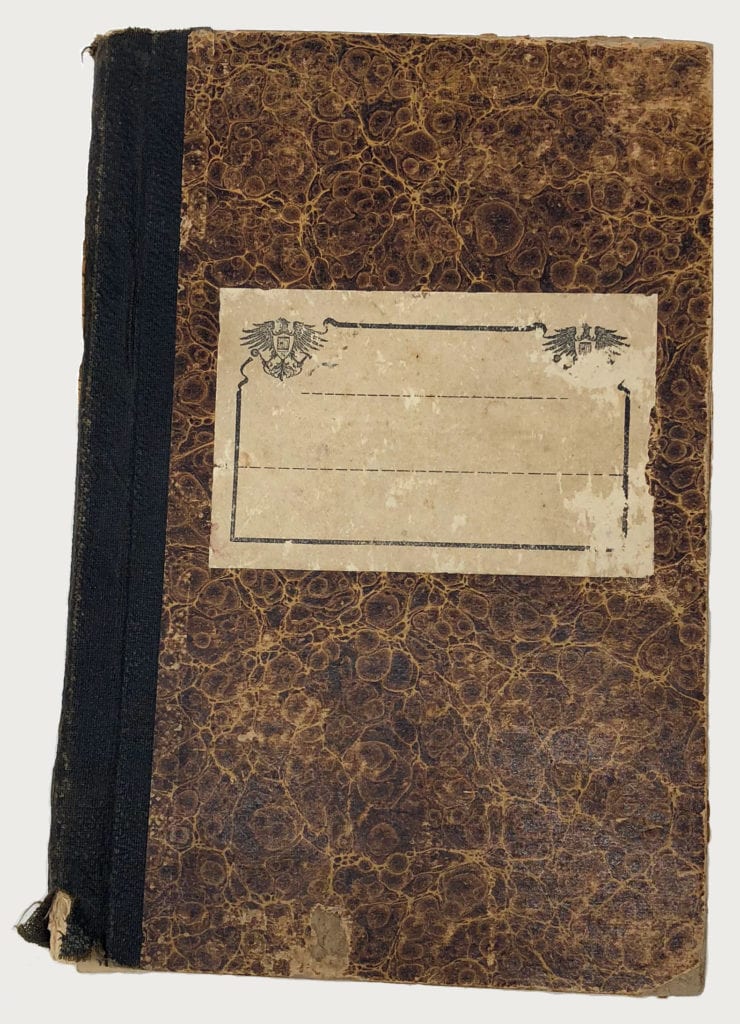
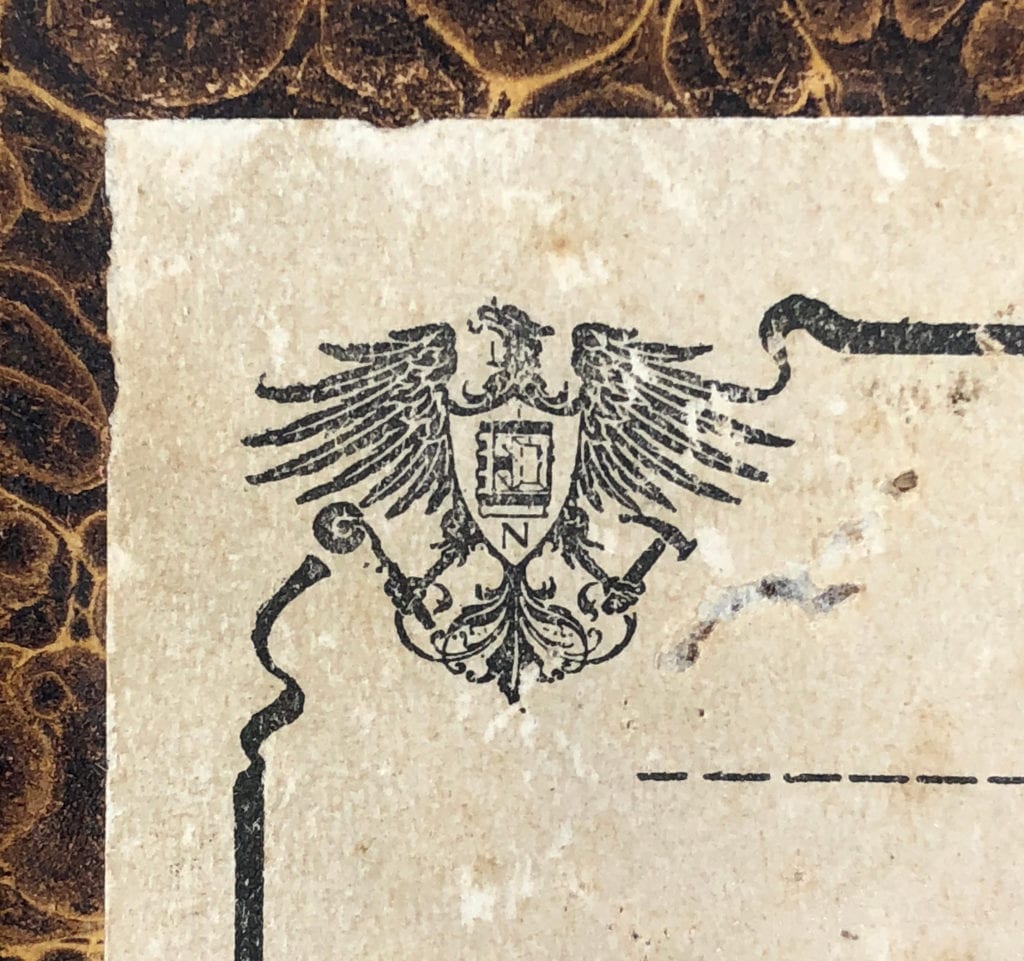
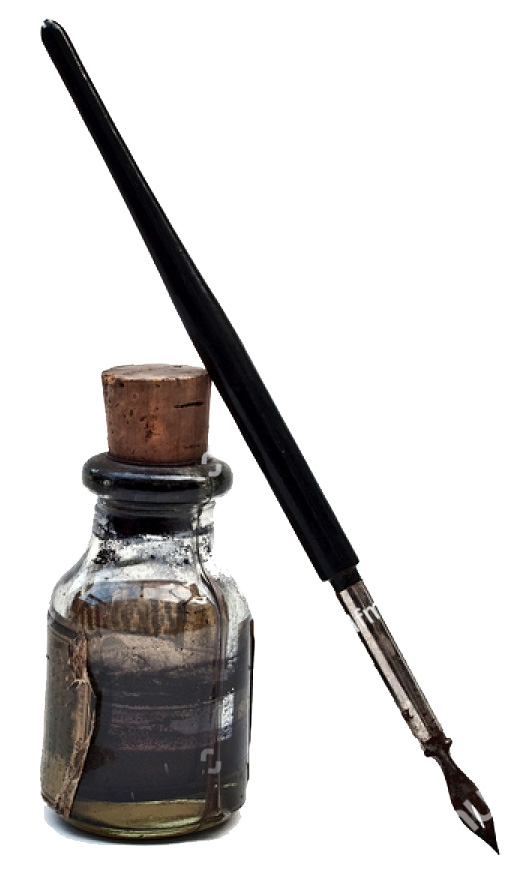
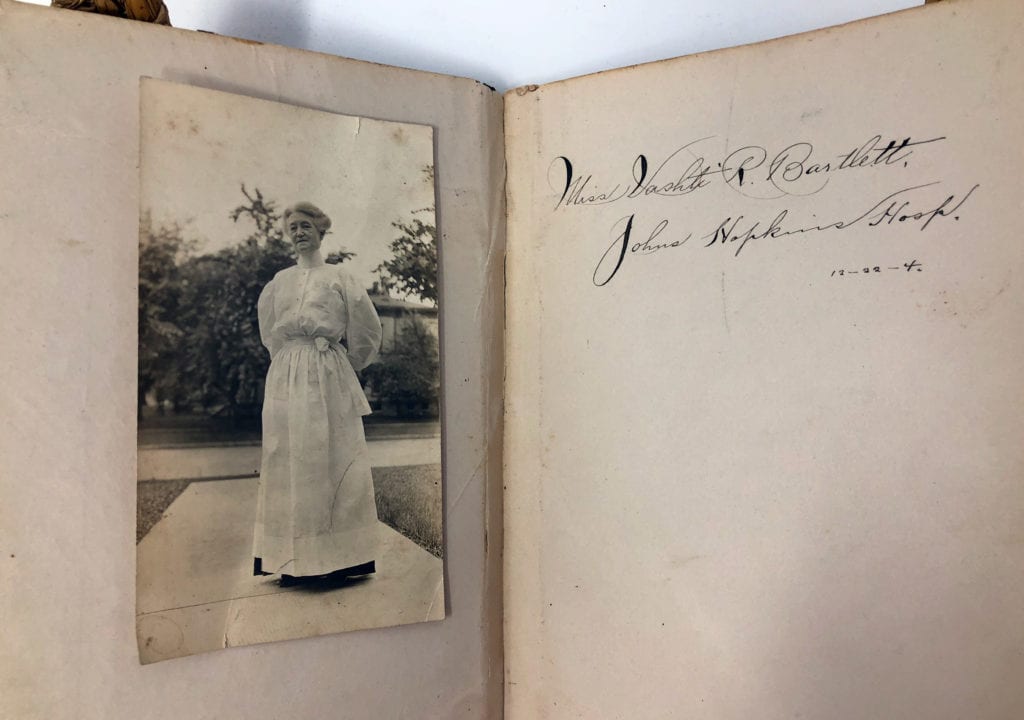
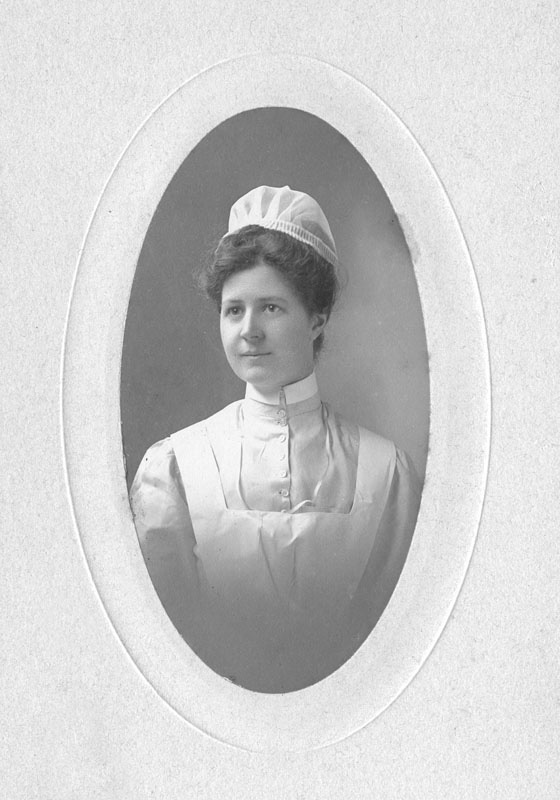
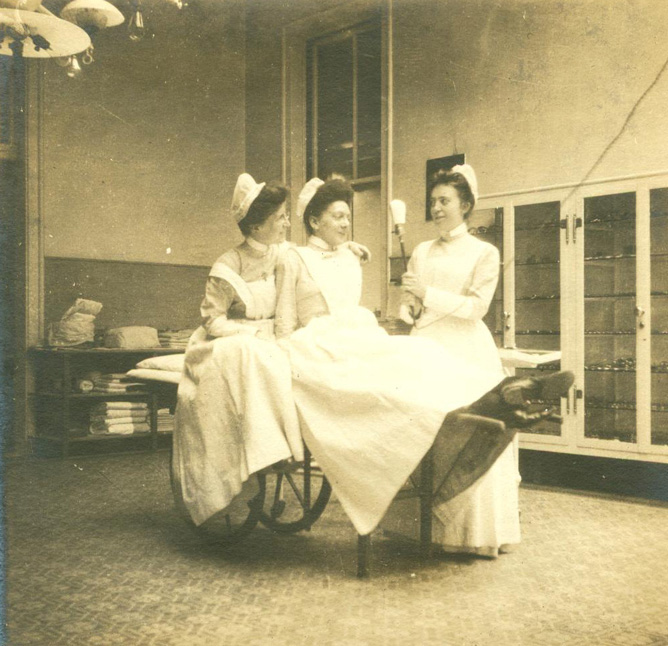
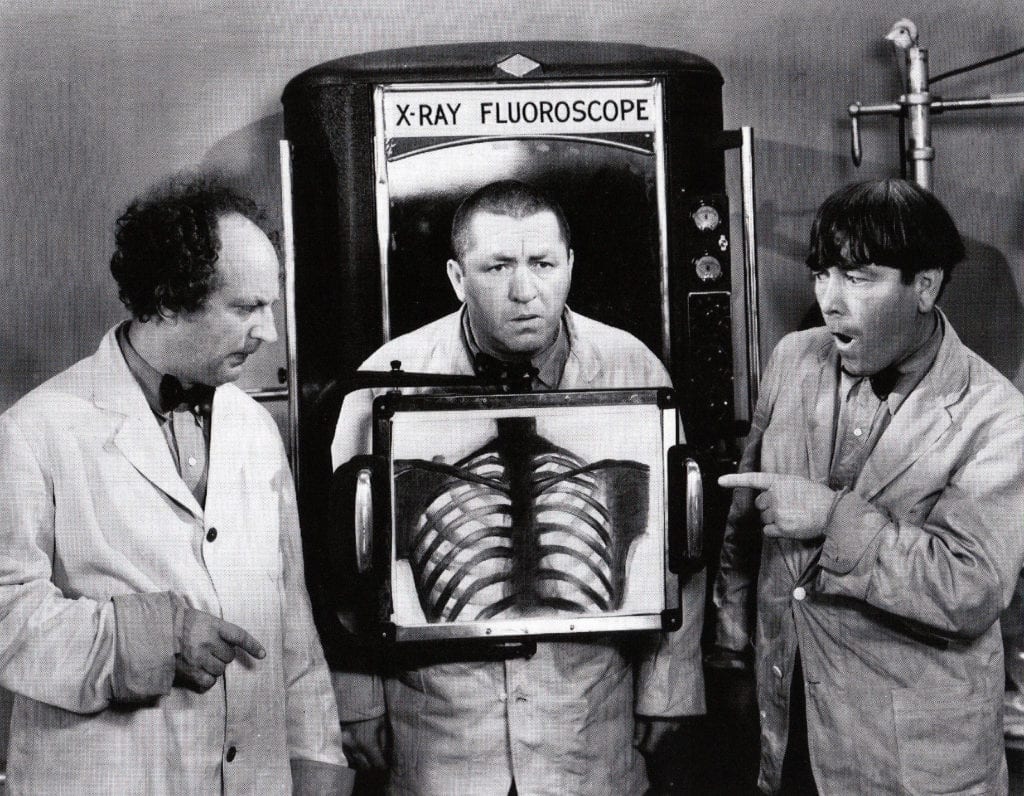
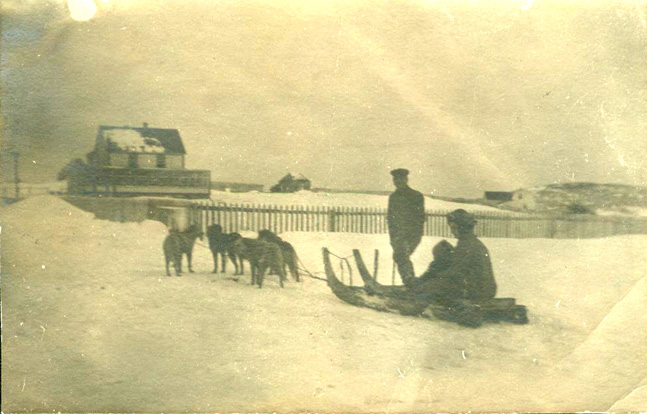
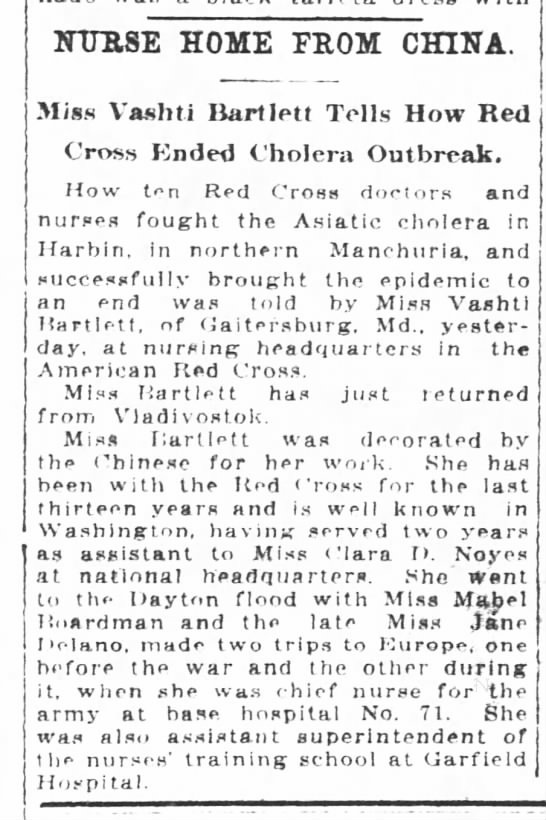
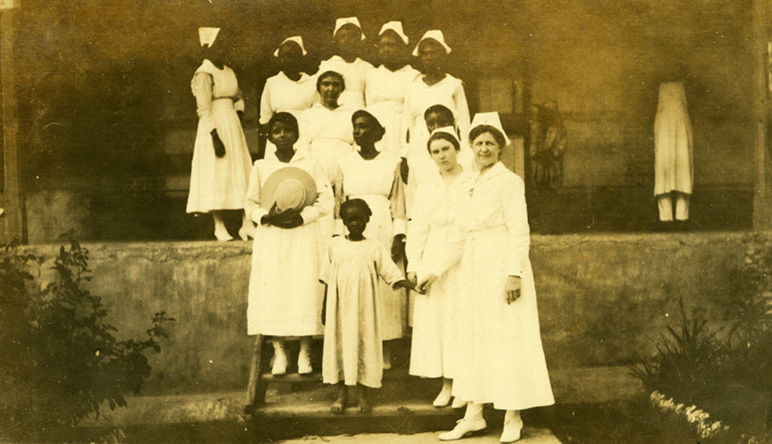
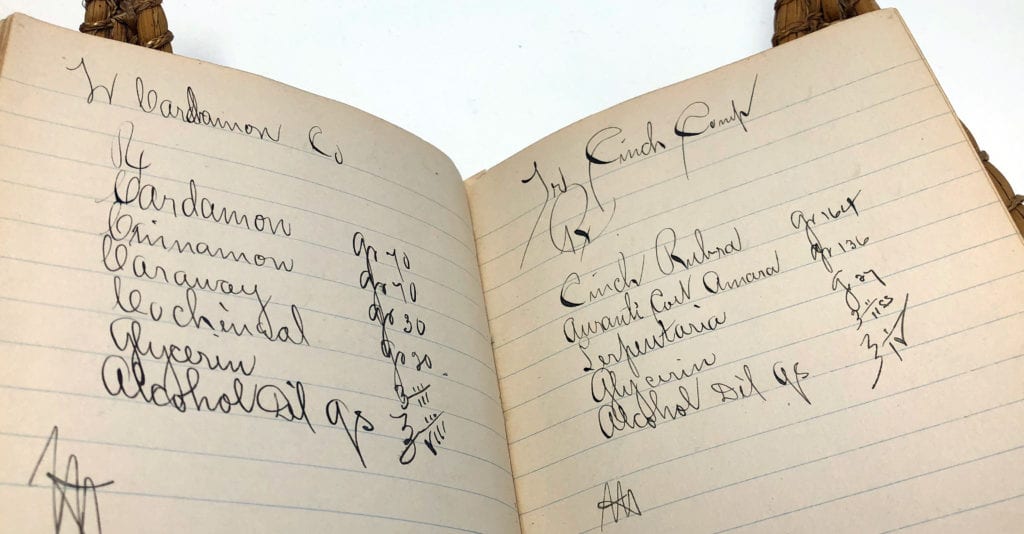
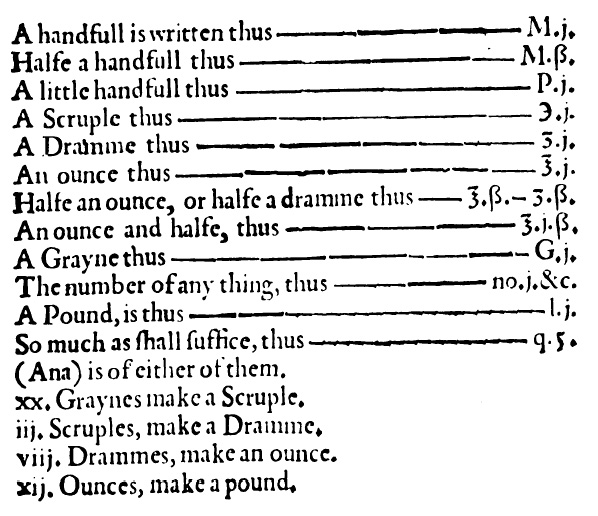

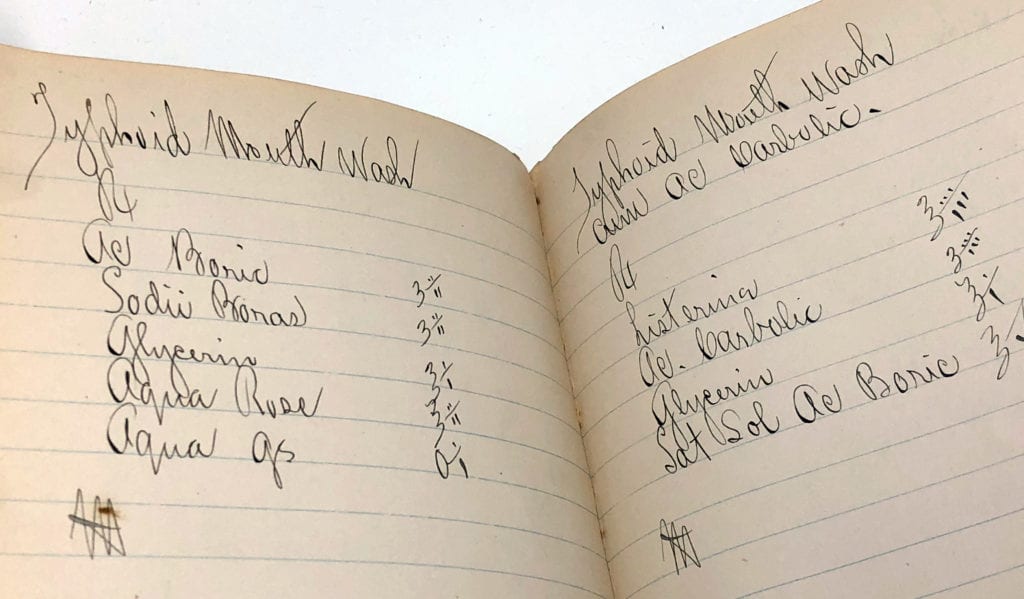
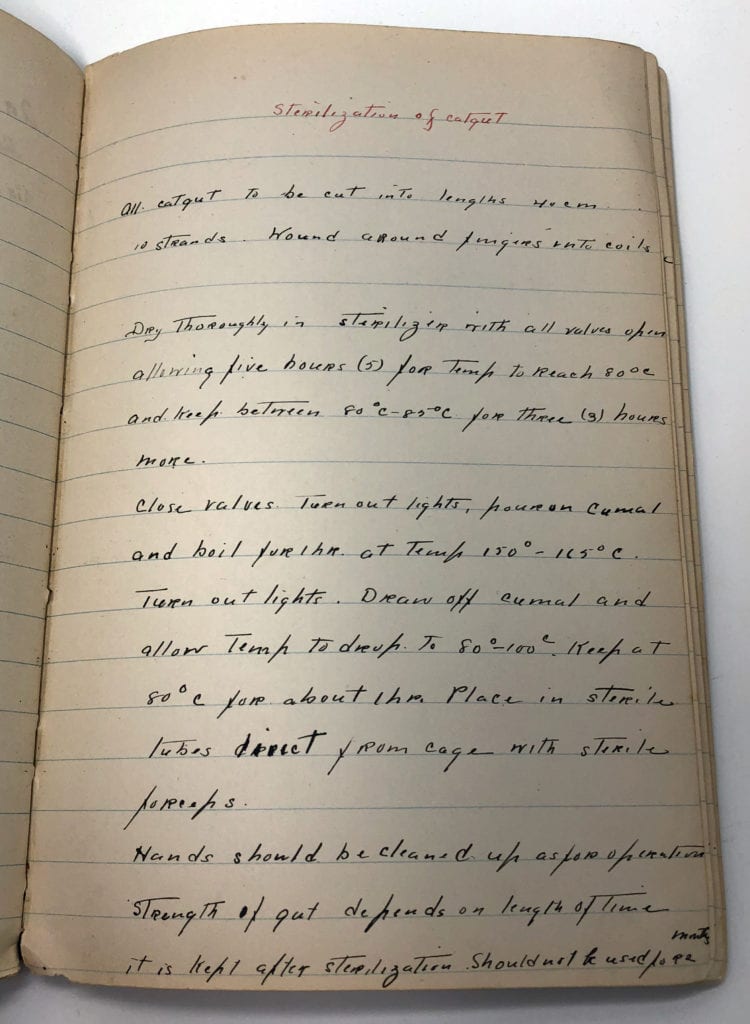
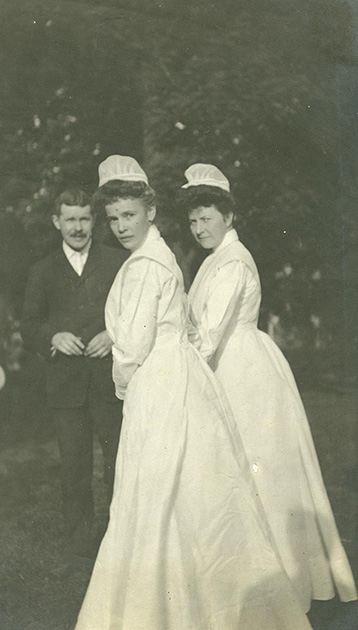
Really enjoy reading your blogs. According to this article it sounds like you have a challenging yet intriguing profession. It would be amazing to hold a pie e if personal history in my hands rather than look at it through glass at a museum. Looking forward to your next blog.
Thank you so much for letting me know! It means a lot to me.
Best
Chuck